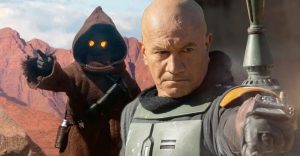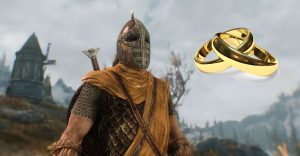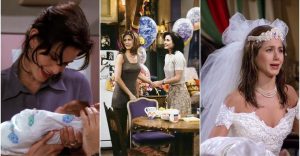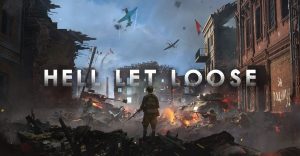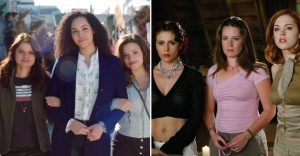The Boys: 16 Differences Between The Comics And The Show
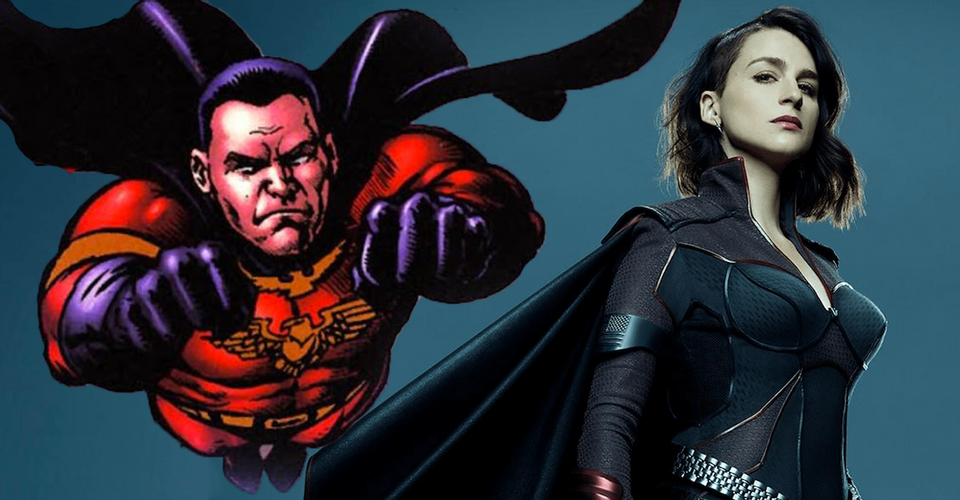
After the success of their adaptation of Garth Ennis’ Preacher, showrunners Seth Rogen and Evan Goldberg return to adapt another of the writer’s best-known works: The Boys. Originally created by Ennis and Darick Robertson, The Boys turned the superhero genre on its head by depicting costumed crime-fighters as dangerously narcissistic celebrities with godlike powers. That’s where The Boys come in. When a hero gets out of line, Billy Butcher (Karl Urban) and his crew “spank the bastards” back in line.
While it retains the comics’ bloody sense of humor and satirical wit, Amazon’s newest series is a more condensed version of the source material. This resulted in some big changes, some of which will undoubtedly surprise fans of the original comics. So without further ado, here are 16 differences between the comic and the series.
Updated May 3rd, 2021 by Darby Harn: The second season of The Boys took the book even further away from its comic book roots. Many more differences piled up as the show diverged in casting and presentation of some characters from the comics, as well as continuing to build on changes established in the first season. These changes, like the survival of Becca Butcher, continue to diverge the story of the show away from the original source material in ways big and small. The show will likely continue to chart its own course from the comics as it heads into the highly anticipated third season.
16 Stormfront

Stormfront is one of the evilest characters in the universe of The Boys, and one of the characters with the biggest changes from the comics. Aya Cash played the character in the show, who was originally a man in the comics. The Nazi Supe led the team Payback, a group of Nazi creations similar to The Seven.
In the comics, Stormfront doesn’t have the relationship with Homelander or the storyline she does in the show. Though her origin is somewhat similar, with her true past and identity being hidden from the public, her ultimate fate at the hands of Ryan is far different.
15 Development Of Ryan

Another major change in the show from the comics is how it develops Ryan, the son of Homelander. Ryan doesn’t exist at all in the comics, his life snuffed out in a violent rage by Billy The Butcher soon after birth. In the show, he develops quickly into a powerful young boy with shocking potential.
His developing powers, specifically his eye lasers, lead to horrific consequences for Stormfront, whose ambitions exceed her grasp. It also leads to unexpected character developments for Homelander, who is far more complex in the show than he is in the original comic books.
14 True Identity Of Black Noir

The true identity of Black Noir was a major mystery in the comics, teased over time until it was revealed that he was a clone of Homelander. This clone is a deranged murderer, behind some of the most shocking crimes in the comics. In the show, it seems that this isn’t the case.
The TV show has yet to completely reveal the identity of Black Noir, but context clues established in season two suggest he isn’t a clone of Homelander. The biggest clue comes when he lifts his mask to eat a piece of candy. It appears that Black Noir is Black, and also severely scarred.
13 The Love Sausage

The Love Sausage is an imposing Soviet Supe from the comics who plays a bloody role in the death of the comics version of Stormfront. The version in the TV show is quite different. This powerful Russian man plays only a bit role in the TV show, making effectively a cameo appearance.
He makes his only appearance so far as a patient at Sage Grove Center. His appearance is shocking and pretty different from the comics. In the comics Love Sausage is generally an ally and friend of the other heroes and teams up with The Seven to take down Stormfront once and for all.
12 Victoria Neuman

A number of characters have different genders in the comics compared to the TV show. One of them is Victoria Neuman, who appeared in the comic books as Victor Neuman. The original was known as Vic The Veep, a political figure who was effectively the stooge of Vought Industries.
The TV show plays it somewhat differently. Victoria is a member of Congress and an apparent Supe herself. She also intends to bring down the corporation, though this could simply be her public cover as she protects the interests of Vought and The Seven behind the scenes.
11 New Superheroes

To give readers something new, The Boys adds original superheroes into the mix. Some of these newcomers include Ezekiel, Mesmer, and Translucent. They may be new characters, but they’re based on familiar names.
The televangelist Ezekiel is a nicer version of the pedophilic Oh Father while Translucent seems to be the series’ version of the alien-themed Jack From Jupiter – one of the original members of The Seven who also had impervious skin, although not invisible. Mesmer, on the other hand, is a wholly new character.
10 TransOcenaic Flight 37

After failing to save the hijacked Flight 37, The Homelander uses the disaster he caused to advance Vought International’s agenda of contracting superheroes to the military. As unethical and sleazy as this already is, it was much worse in the comics.
Originally, The Seven intercepted one of the planes headed for the Twin Towers during the September 11 attacks. The heroes kill the terrorists but fail miserably at everything else, causing the plane to instead crash into the Brooklyn Bridge. Vought has done everything to cover this up to make sure the catastrophe never stains its top assets.
9 Compound V and The Boys

With the exception of The Female, Billy Butcher and his men don’t have any powers. They may be skilled in black ops missions and weapons handling, but The Boys don’t stand a chance against the heroes in a fair fight. To them, the heroes are nigh unstoppable monsters they have to exterminate.
This is different in the comics because The Boys can go toe-to-toe with any of The Seven thanks to the super-soldier serum Compound V. Without their powers, they lose their original angst of being super-powered humans who hunt down superheroes for the government.
8 Madelyn Stillwell

The Seven may be the most powerful superheroes in the world, but they still have to answer to their boss. Their superior in the comics is James Stillwell: an emotionless and sociopathic corporate executive with nothing but Vought’s welfare in his mind.
The series replaces James with Madelyn Stillwell as The Seven’s handler. Unlike her printed counterpart, Madelyn is more human and vulnerable – even dying thanks to the latter. She may prioritize Vought’s dealings but she’s not as inhuman as James, who ordered the massacre of the comics’ version of the X-Men for becoming too uncontrollable and unmarketable.
7 A-Train and Popclaw

What could be seen as a foil to Hughie and Starlight is the relationship of the superheroes A-Train and Popclaw. The former Teenage Kix heroes’ love turns into tragedy when A-Train kills her to keep his dependence on Compound V hidden, but this only makes things worse.
This relationship never happened in the comics because the two never even shared a panel together. Everything about them was exclusively made for the series, and the two are considerably more sympathetic than their original selves. By the comics’ end, it’s A-Train who dies while Popclaw is (presumably) still alive.
6 The Deep

Much to Starlight’s horror, her idol The Deep – The Seven’s meathead version of Aquaman – turned out to be a terrible person who sexually abused her. While the harassment occurs in the comics, it wasn’t The Deep who was at fault.
What happened to Starlight was actually worse in the source material, where three other heroes (A-Train, Homelander, and Black Noir) pressured her into oral sex. Ironically, the original Deep was the most mature and business savvy of The Seven. His live-action incarnation shares more in common with the original A-Train, who was just as cocky and self-absorbed.
5 The Homelander

The Boys’ version of Superman is The Homelander, a spoiled brat with the powers of a god and an endless list of vices. Everything he does is motivated by his childish desire to be taken seriously, though half the time he acts impulsively and proves peoples’ fears right.
In the series, he’s cunning and unpredictable, making him more dangerous than ever. Now, he calmly threatens and manipulates people to make things go his way instead of throwing a tantrum. He also has a sexual relationship with Stillwell – something that’d never happen in the comics since he despised the corporate representative.
4 The Female’s Origins

As a baby, the Female accidentally ate some Compound V and became the most dangerous of The Boys. Save for Frenchie, no one understands what she’s thinking but she can be counted on to rip people’s faces off. She also part-times as a mafia hitman.
Meanwhile, the series gives her an entirely new backstory. Instead, she was a child soldier who was injected with Compound V by her guerilla compatriots. Inadvertently, she was a byproduct of Vought’s plans to create supervillains, as the company shipped the compound to terrorists to bolster the artificial demand for superheroes only they can satisfy.
3 Starlight

The Boys opens with The Seven welcoming Starlight into the fold. Though she’s naïve at first, she slowly adapts and figures out how to maneuver her way around the sleazy underbelly of the superhero business.
The series, conversely, presents a more proactive version of her illustrated self. Even if the company pushes back, Starlight doesn’t take too long to stand her ground in the team and she actively fights to keep her idealism and dignity intact. Like in the comics, this earns the respect of Queen Maeve who has since succumbed to her cynicism.
2 Wee Hughie Campbell

The heart and soul of The Boys is Hughie Campbell: the mild-mannered newcomer who’s brought into Butcher’s team after A-Train accidentally kills his girlfriend Robin. Originally based on Simon Pegg (who now plays his doting father), Hughie is a well-meaning yet spineless kid who Butcher pushes around into compliance.
Like his love interest Starlight, Hughie is more assertive in the series than he used to be. While it takes him eight episodes to defy Butcher’s intimidating nature, this is still faster than the comics where it took him forever to break free from the emotional manipulation.
1 Becca Butcher

The biggest change in The Boys is the fate of Butcher’s wife Becca. Previously, she dies after giving birth to The Homelander’s baby. Her rape and death at the hands of The Seven’s leader is the only thing that keeps Butcher alive.
Shockingly, the series keeps her alive. Apparently, Vought hid her survival and more importantly, her super-powered child. It’s implied that superheroes biologically can’t reproduce, possibly making Homelander’s son the first superhero born outside of a laboratory. Her being alive also shatters everything Butcher believed in, making things unpredictable for him and even the comics’ most dedicated fans.
About The Author










